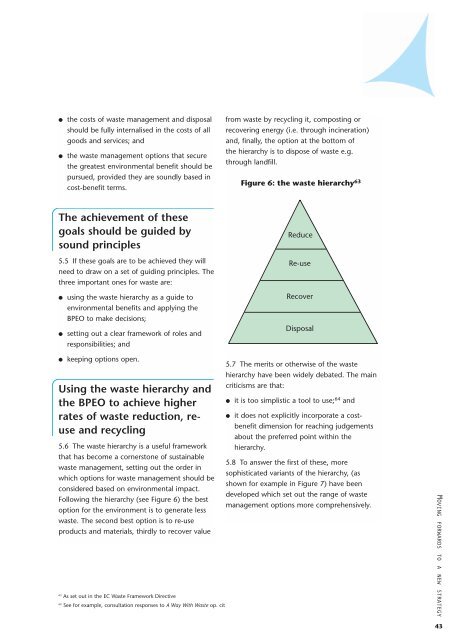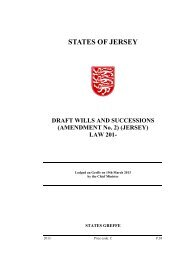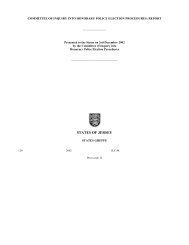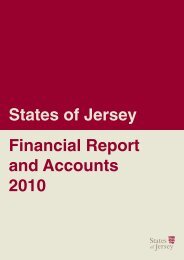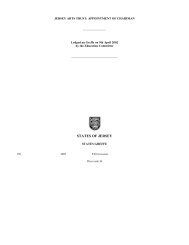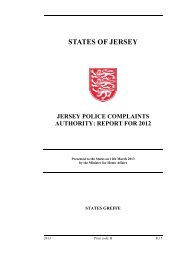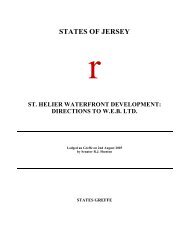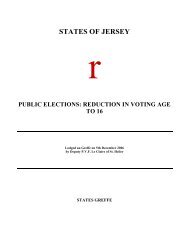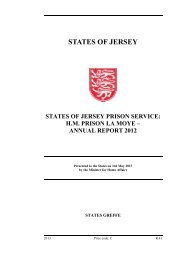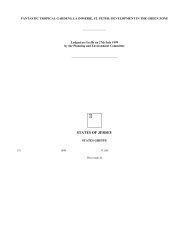Waste not want not - States Assembly
Waste not want not - States Assembly
Waste not want not - States Assembly
Create successful ePaper yourself
Turn your PDF publications into a flip-book with our unique Google optimized e-Paper software.
●<br />
●<br />
the costs of waste management and disposal<br />
should be fully internalised in the costs of all<br />
goods and services; and<br />
the waste management options that secure<br />
the greatest environmental benefit should be<br />
pursued, provided they are soundly based in<br />
cost-benefit terms.<br />
from waste by recycling it, composting or<br />
recovering energy (i.e. through incineration)<br />
and, finally, the option at the bottom of<br />
the hierarchy is to dispose of waste e.g.<br />
through landfill.<br />
Figure 6: the waste hierarchy 63<br />
The achievement of these<br />
goals should be guided by<br />
sound principles<br />
5.5 If these goals are to be achieved they will<br />
need to draw on a set of guiding principles. The<br />
three important ones for waste are:<br />
Reduce<br />
Re-use<br />
●<br />
●<br />
using the waste hierarchy as a guide to<br />
environmental benefits and applying the<br />
BPEO to make decisions;<br />
setting out a clear framework of roles and<br />
responsibilities; and<br />
Recover<br />
Disposal<br />
●<br />
keeping options open.<br />
Using the waste hierarchy and<br />
the BPEO to achieve higher<br />
rates of waste reduction, reuse<br />
and recycling<br />
5.6 The waste hierarchy is a useful framework<br />
that has become a cornerstone of sustainable<br />
waste management, setting out the order in<br />
which options for waste management should be<br />
considered based on environmental impact.<br />
Following the hierarchy (see Figure 6) the best<br />
option for the environment is to generate less<br />
waste. The second best option is to re-use<br />
products and materials, thirdly to recover value<br />
63<br />
As set out in the EC <strong>Waste</strong> Framework Directive<br />
64<br />
See for example, consultation responses to A Way With <strong>Waste</strong> op. cit<br />
5.7 The merits or otherwise of the waste<br />
hierarchy have been widely debated. The main<br />
criticisms are that:<br />
●<br />
●<br />
it is too simplistic a tool to use; 64 and<br />
it does <strong>not</strong> explicitly incorporate a costbenefit<br />
dimension for reaching judgements<br />
about the preferred point within the<br />
hierarchy.<br />
5.8 To answer the first of these, more<br />
sophisticated variants of the hierarchy, (as<br />
shown for example in Figure 7) have been<br />
developed which set out the range of waste<br />
management options more comprehensively.<br />
MOVING FORWARDS TO A NEW STRATEGY<br />
43


